In 2017, a Japanese international outreach organisation called Imagine Oneworld launched the Kimono Project. It aimed to create a kimono for every country in the world, which would also reflect the nation’s culture, history, or architectural beauty. Once the project was completed, there were over 200 custom-made kimonos to admire for every country. We’ve placed our favourites below!
Also read: Tourists Can Still Ride These Charming Vintage Trams While Exploring Japan!
Singapore
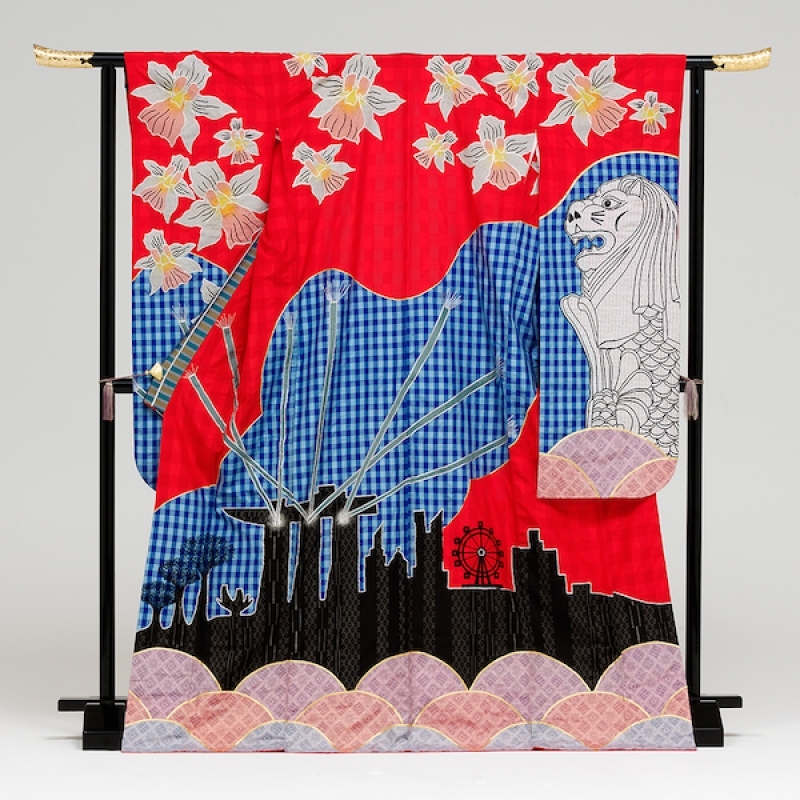
Singapore’s kimono was created with checkered and Kasuri patterns, combined like patchwork and fastened by Kyoto embroidery. The design features iconic Singaporean symbols such as the merlion, SG’s national flower Vanda Miss Joaquim, the Botanic Gardens, and Marina Bay Sands. To make it more special, these were all inspired by the designs of high school students in Kagoshima Prefecture!
Malaysia
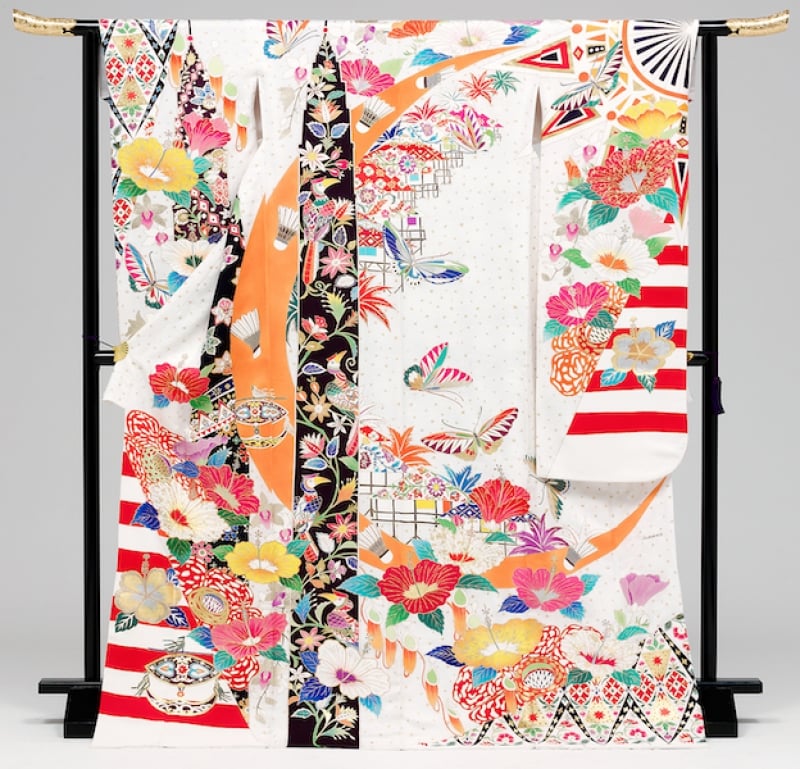
Malaysia’s kimono was in collaboration with the students from Fukuoka Prefectural Kurume High School. The artists incorporated a lot of Malaysian symbols such as the Petronas Towers and the Malaysian flag. Around 40 students also drew the national hibiscus flowers, while the colouring took inspiration from traditional batik.
Indonesia
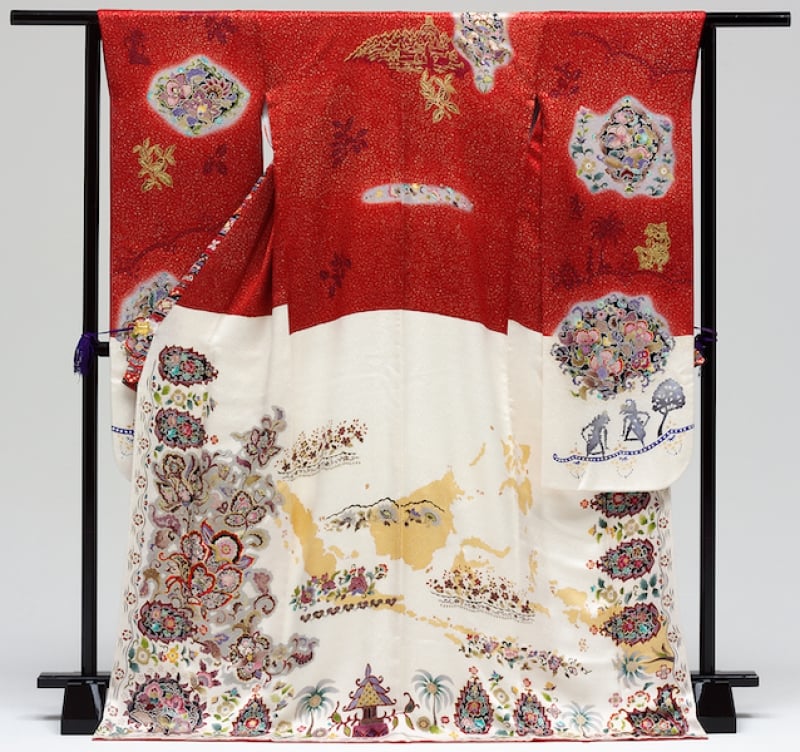
Indonesia’s kimono features Borobudur and Indonesian islands. Most of the design was drawn and painted with bold red and white dye, aligned with the Indonesian flag. According to the official Kimono Project website, “This is a collaborative work in which wax was placed in Pekalongan, the batik production area of Indonesia, while hand-painted Yuzen, embroidery, and gold processing were done in Kyoto.”
The Philippines
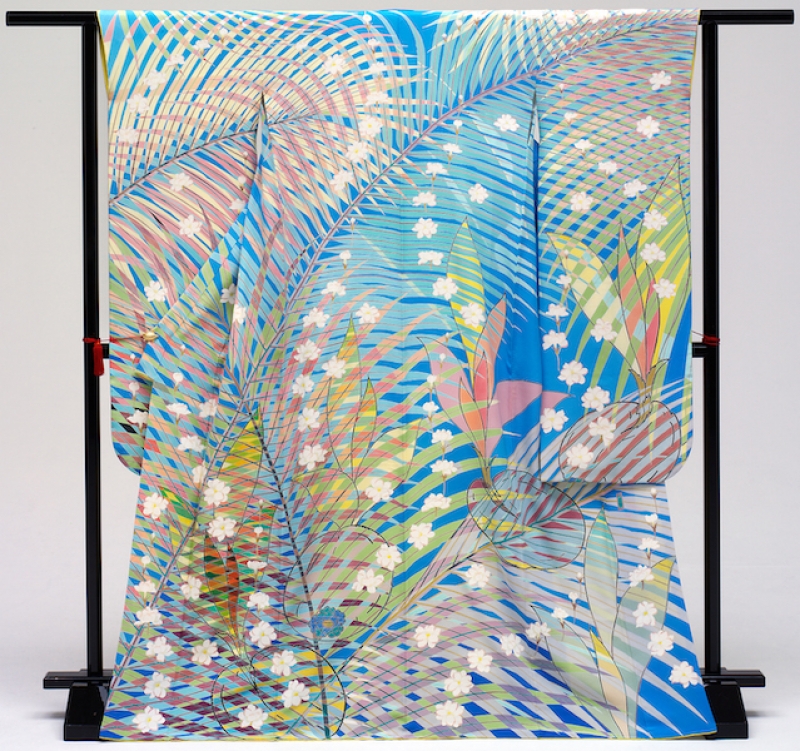
According to the Kimono Project, the Philippine kimono was inspired by the “sound of the wind” and palm trees. Palm trees have been a source of life in the Philippines since time immemorial; they help build, replenish water and nutrition, and support life. The colouring was also inspired by sunshine, and the movement of the palms was depicted with the idea of wind breezing through the trees.
Thailand
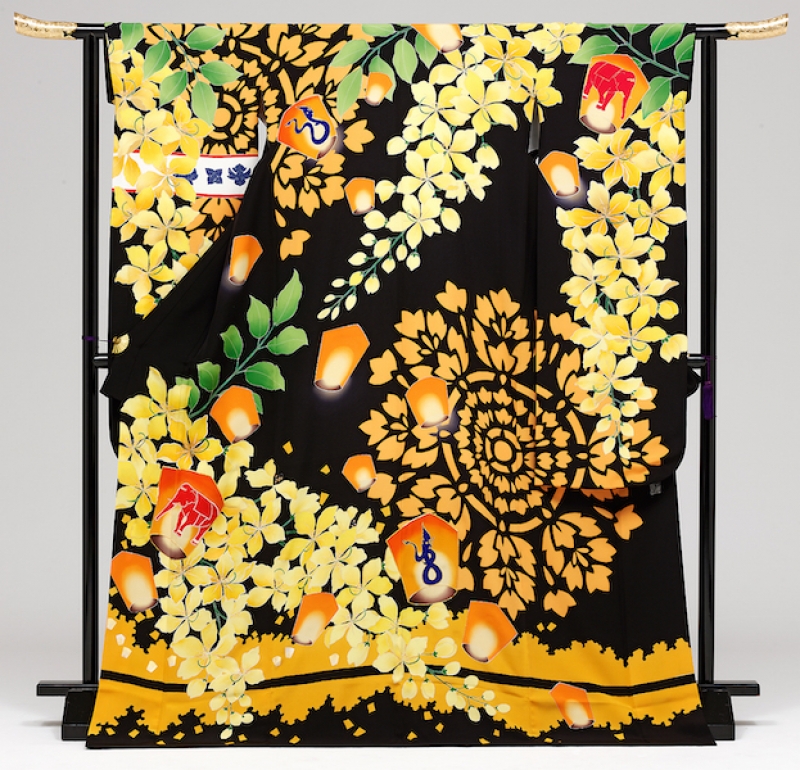
Thailand’s kimono depicts many animals across a fiery gold canvas. This was inspired by Thailand’s culture wherein a guardian animal is said to look after each day of the week. The kimono also features golden flowers and fireworks to symbolise the new era of the Kindom of Thailand.
India
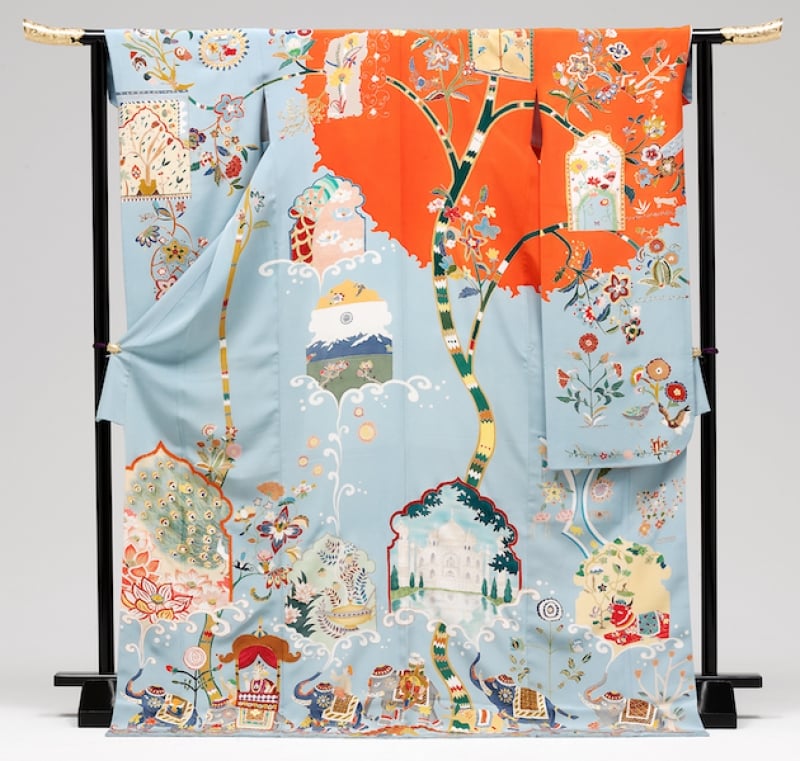
This kimono design was a collaboration with the fourth-grade students of Taimei Elementary School in Tokyo. The design consists of Indian motifs such as elephants, peacocks, the Taj Mahal, and lotus along with the brilliant, shining sun.
The United States
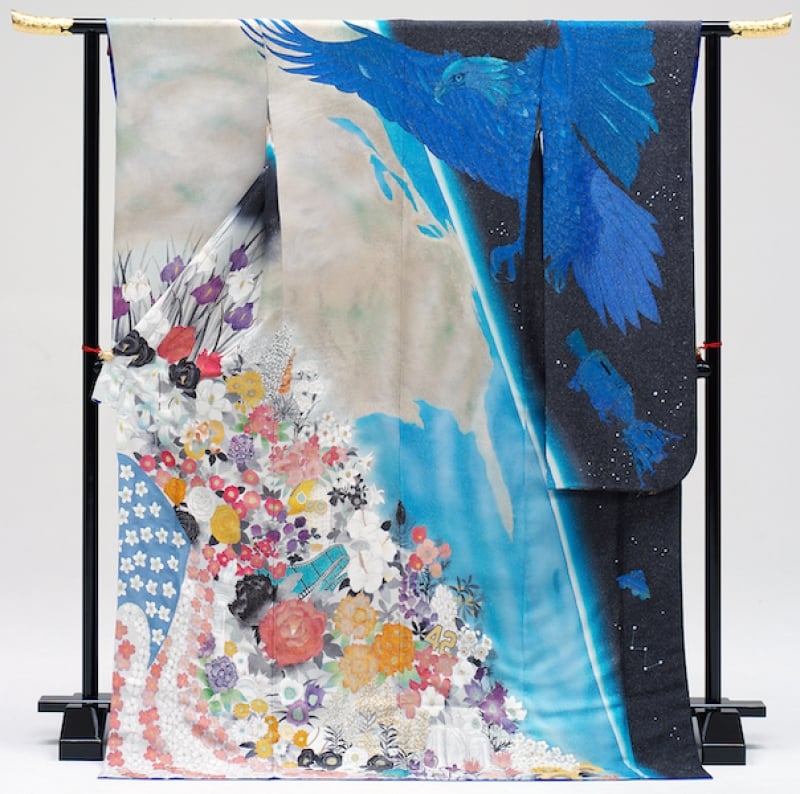
The United States’ state flowers are all represented in the US kimono along with all too familiar symbols such as the American Eagle, American baseball and football, Hollywood, and the goddess of freedom which Americans value above all else.
New Zealand
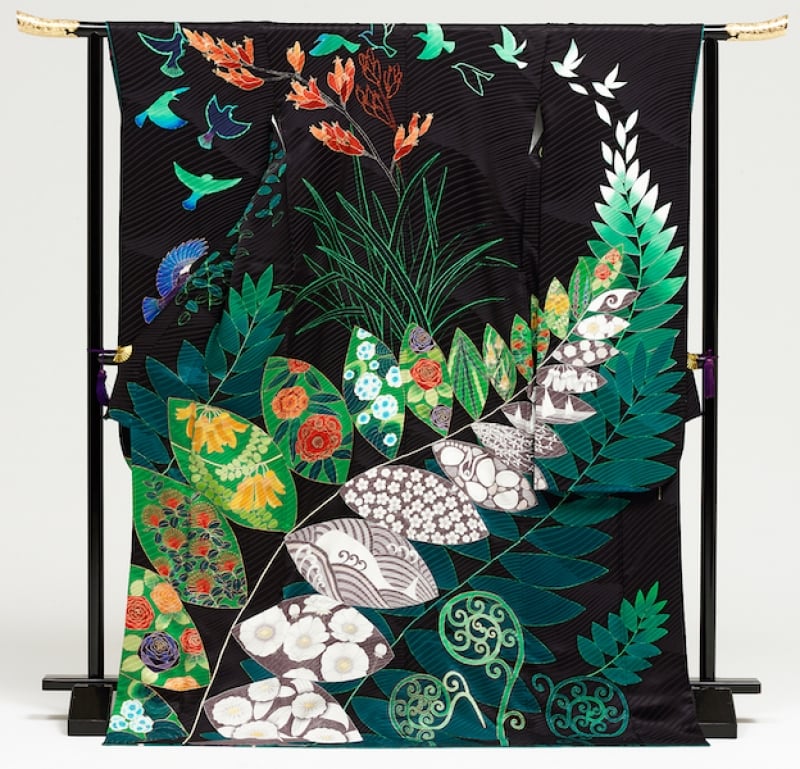
The foundation of New Zealand’s kimono was a black canvas to represent the All Blacks — New Zealand’s national rugby team. Against the black canvas was everything that could describe the nature of New Zealand: birds, flowers, and the silver fern which embodies the spirit of NZ. Kiwis also consider the silver fern to be their badge of honour.
Australia
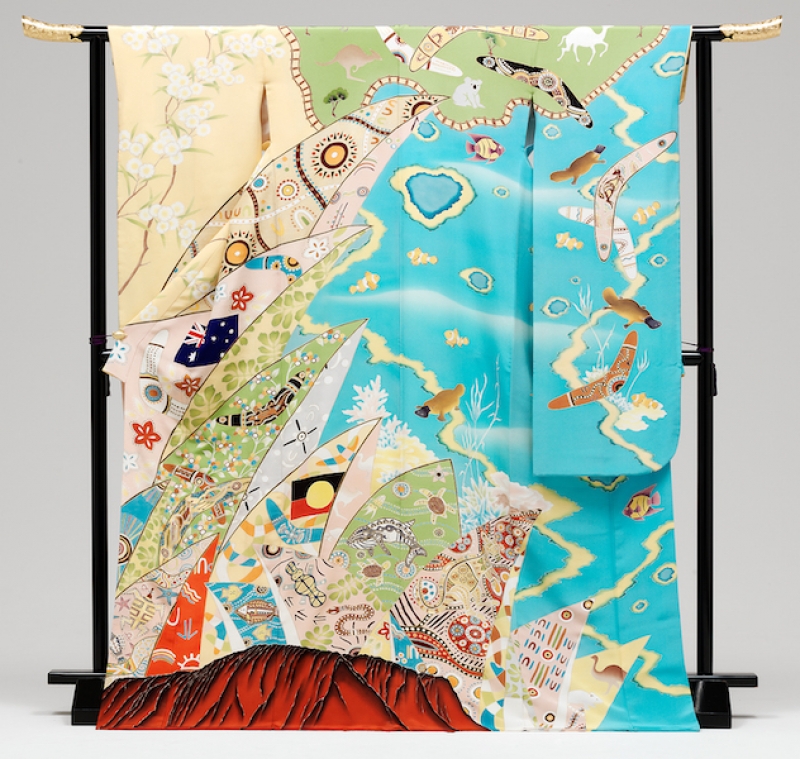
With the Australian national colours of yellow and green, the artists layered symbols on the Australian kimono such as Sydney Opera House, aboriginal art, some platypuses, and the majestic Ayers Rock. The artists also incorporated railroad tracks, the Great Barrier Reef, and portrayed the culture of Australia where humans and nature live in harmony.
United Arab Emirates
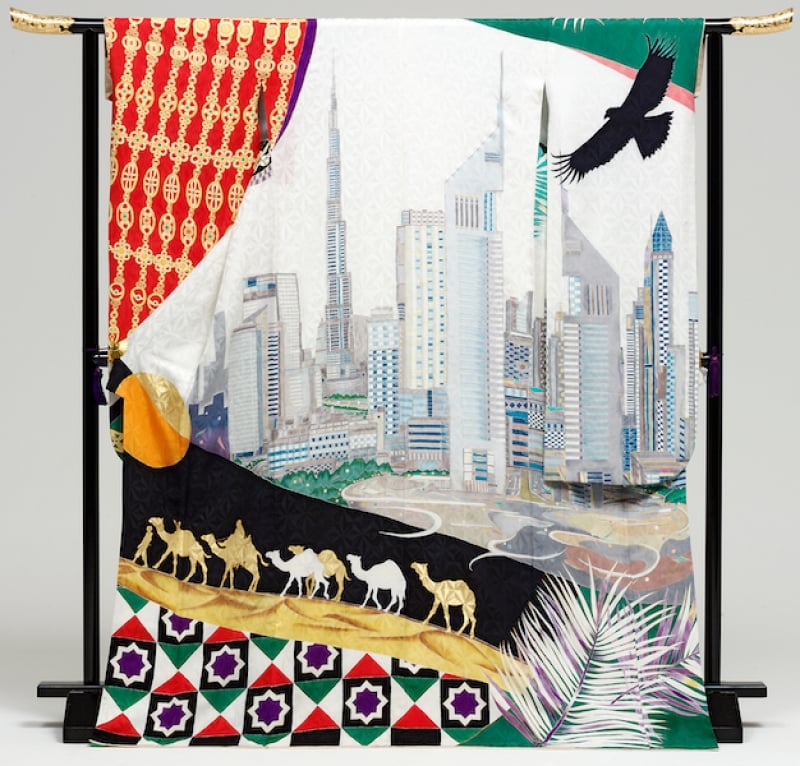
As the UAE is home to one of the world’s largest cities, this kimono created by Japan would not be complete without the impressive skyscrapers of Dubai. Aside from the magnificent buildings, the kimono features a falcon flying in the sky, camels in the desert, ornaments and other national symbols, which are all painted in the same colours as UAE’s national flag.
Oman
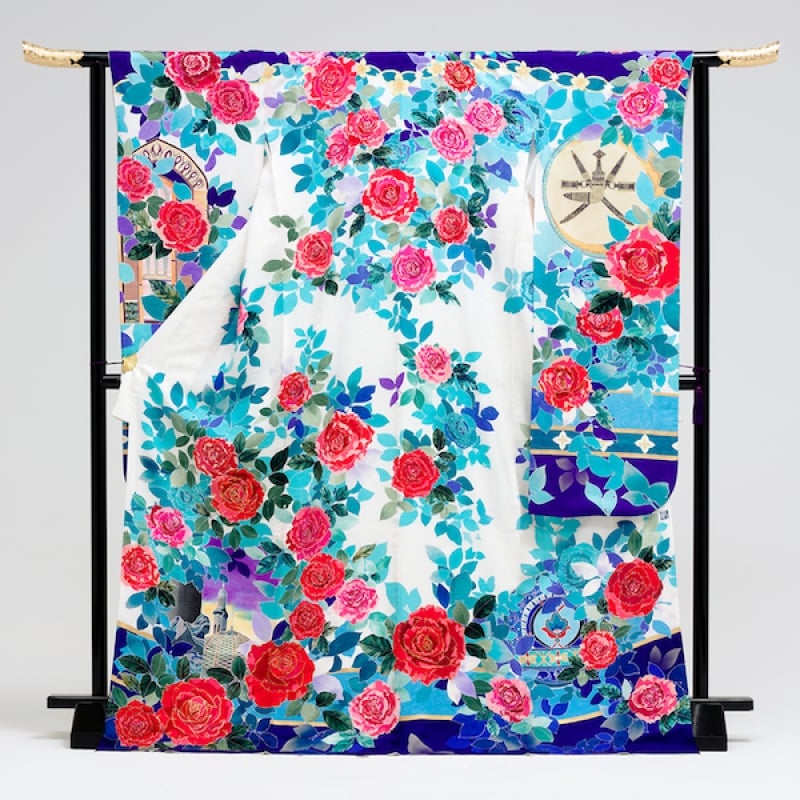
Oman’s kimono consists of an elegant mosque festooned in the iconic Sultan Khabouth Rose. The Omani dagger is also seen in the kimono as it’s the country’s national symbol and represents a person’s dignity. This part of the kimono was subjected to gold processing twice.
South Africa
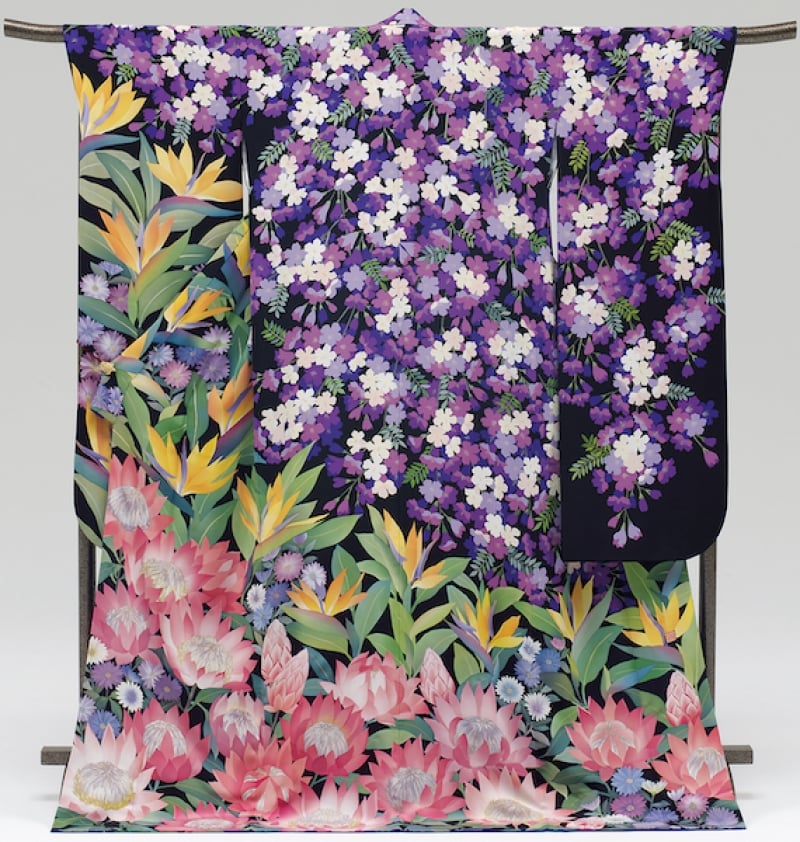
A very purple and pink kimono among Japan’s Olympic collection, South Africa’s piece represents the nation’s struggles which its people have overcome. According to Kimono Project, “Jacaranda flowers are printed with seven different colours by using ‘superposing batik technique.'” This was also inspired by SA’s history likened to dusty flowers that bloomed in barren alpine areas; but most of all, the kimono was dedicated to Former President Nelson Mandela and Former President Declark who fought against racial discrimination and are considered heroes.
Zambia
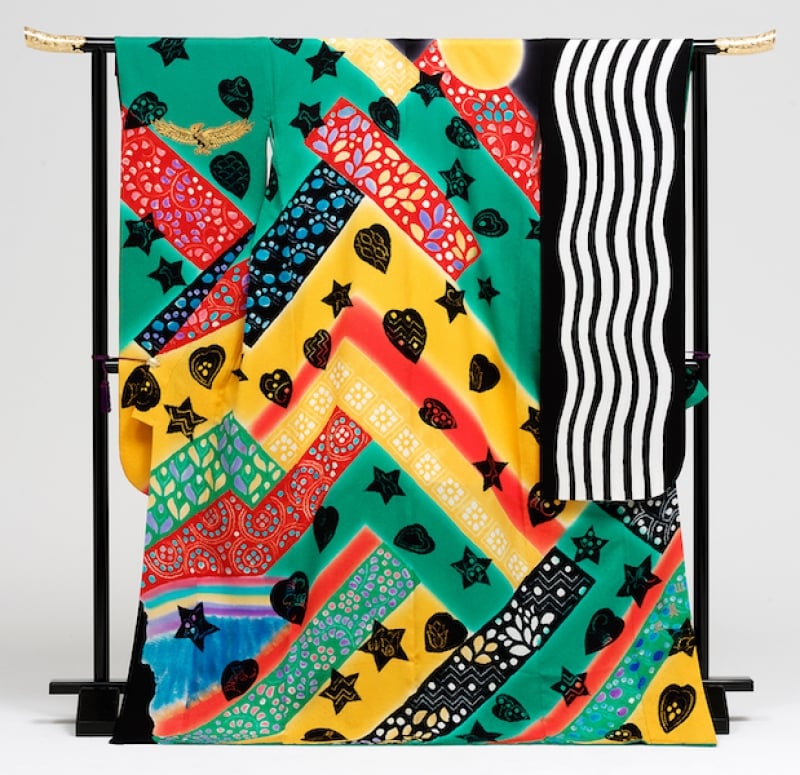
Zambia’s kimono represents the country’s 73 tribes with 73 stars and hearts. It also features the African fish eagle painted in gold on the front of the sleeves; but more striking are the colours of the national flag throughout the kimono. Black represents Zambia’s people, red represents the struggle for freedom, orange represents rich minerals, and green represents natural resources.
The United Kingdom
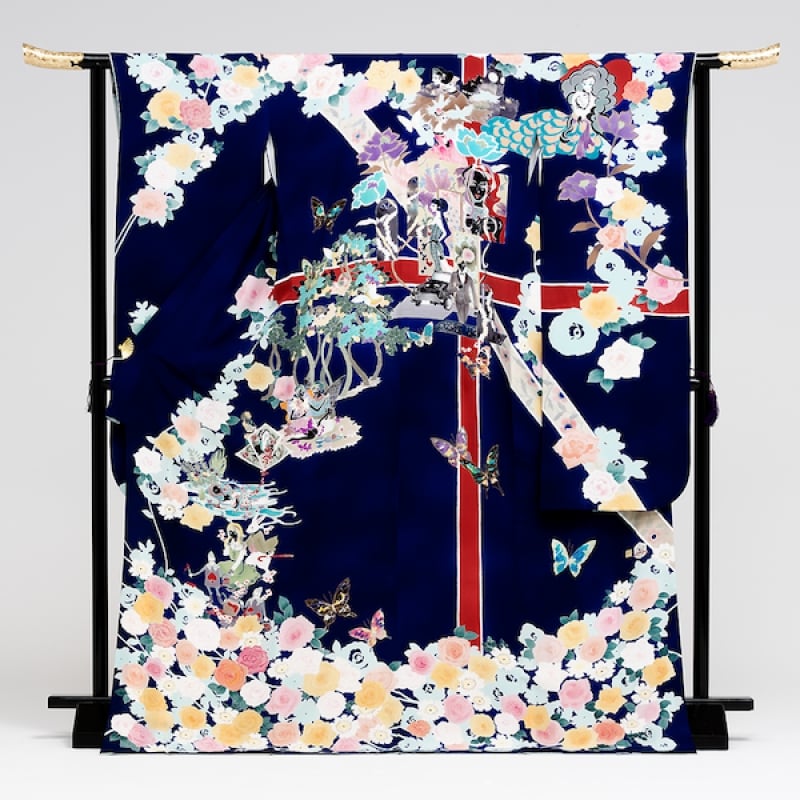
The kimono of the United Kingdom is all about English literature: Shakespeare, Sherlock Holmes, and other aspects of UK culture that people will find romantic. These include the London night view and the River Thames, which flows through five different cities.
Croatia
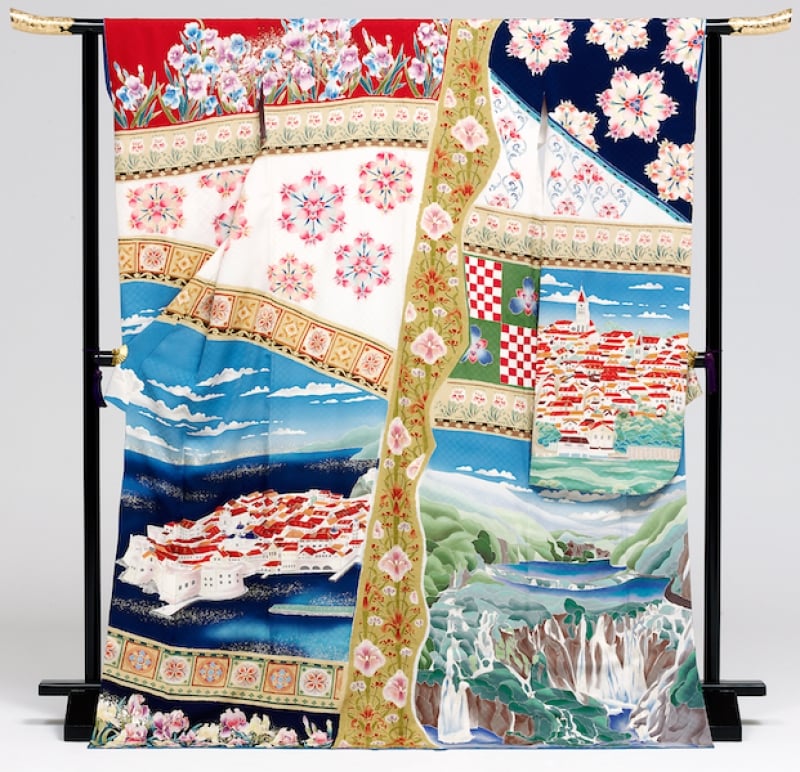
Croatia’s kimono features eight sections which were carefully hand-painted with traditional dyeing methods all the way from the eighth century. It also shows UNESCO World Heritage sites and popular tourist attractions such as Dubrovnik’s Old Town, Zagreb Cathedral, and Lake Plitvice National Park.
Greece
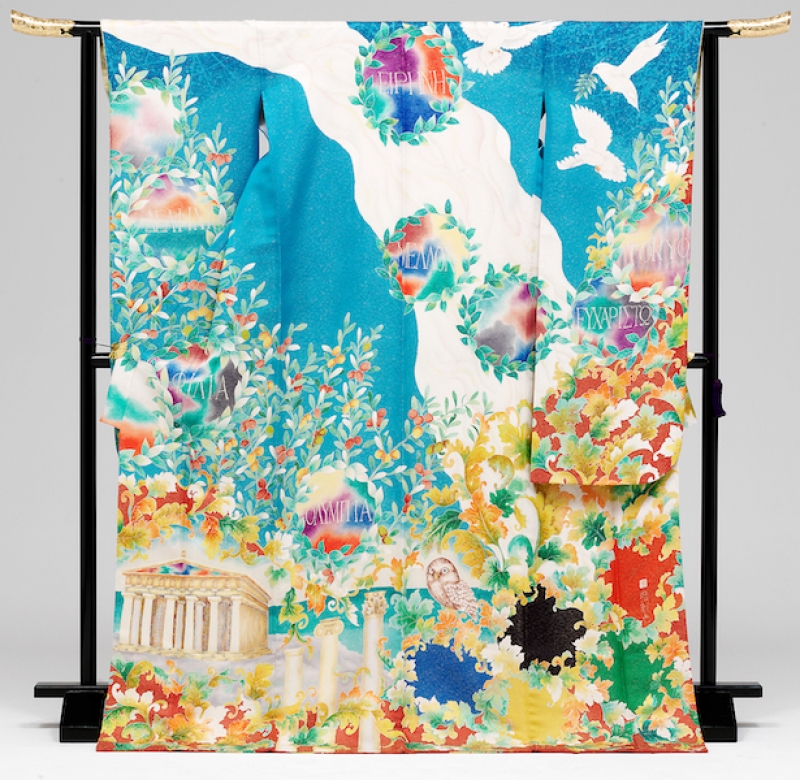
Last but not least, one of our favourite kimonos made by Japan is Greece, the birthplace of the Olympics. The kimono perfectly encapsulates ancient civilisation with designs like the Parthenon, greek letters, olives, the national flower acanthus, and pigeons against a bright blue background. The pigeons are believed to be a symbol of peace, while the single owl is a symbol of intelligence.
Also read: Top 17 Airbnbs in Greece for Your Dream Getaway
All of these kimonos are undoubtedly jaw-dropping and so intricately designed that it took the Japanese four years to complete the set of over 200 kimonos per country. This awe-inspiring collection of art and expression will certainly be treasured for generations to come.
All images credited to Kimono Project | Official Website




